Aerostructures
“I can calculate the motion of heavenly bodies, but not the madness of people.“
Isaac Newton
The Aerostructures team designs the rocket’s mechanical framework, ensuring optimal strength, durability and weight efficiency. This specialized group of engineers focuses on crafting the essential structural components that will withstand the extreme conditions of launch and flight. They use cutting-edge software to model various elements of the rocket, from the fuselage to the fin assemblies, ensuring precise design for maximum performance. Their work is pivotal to maintaining the rocket’s integrity during intense aerodynamic forces.
Once the design phase is complete, the Aerostructures team creates highly detailed technical drawings that serve as blueprints for the production of each component. The team works closely with other departments to ensure that all designed assemblies align perfectly with the rest of the rocket’s systems, combining functionality with manufacturability.
The Aerostructures members are also actively involved in overseeing the production of key materials, such as carbon fiber and glass fiber skins, which form the outer layers of the rocket.
